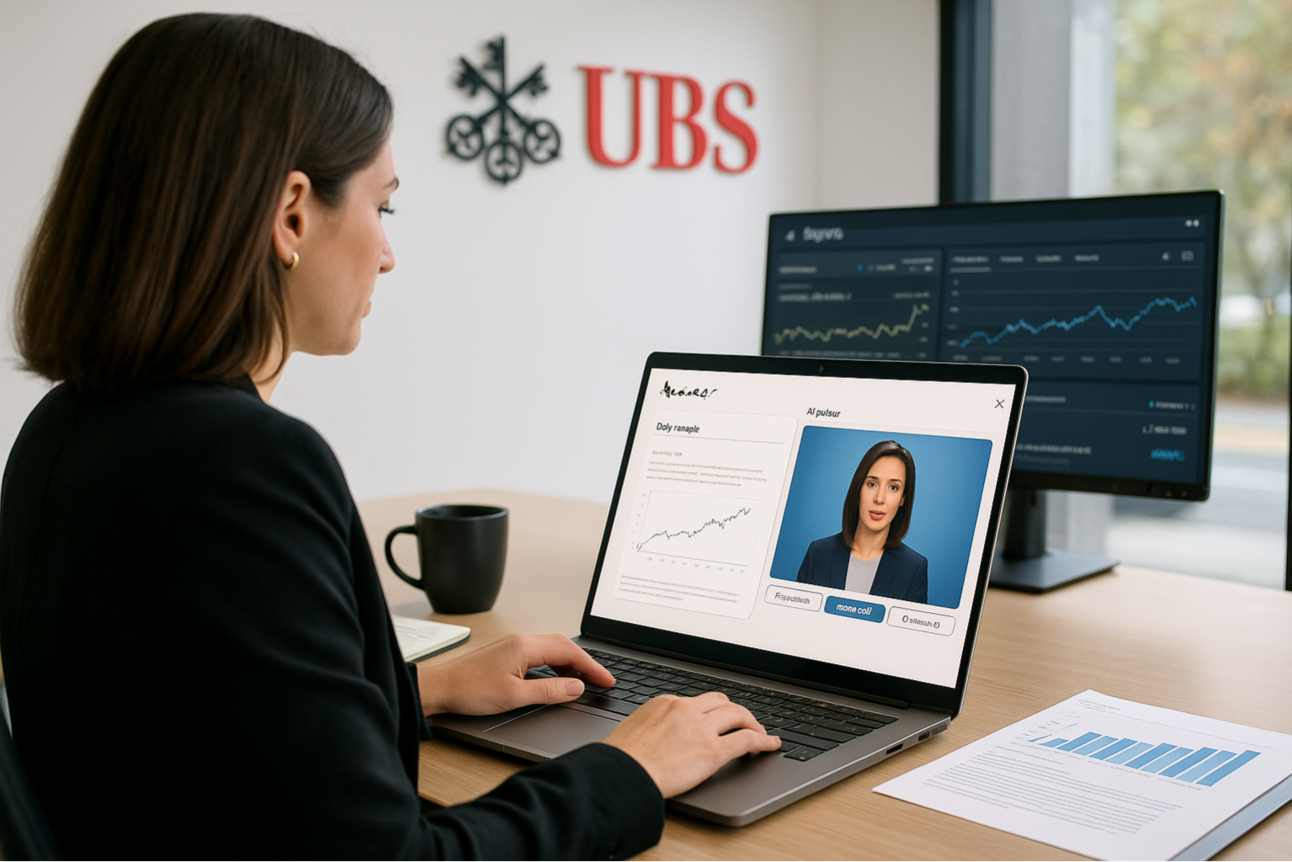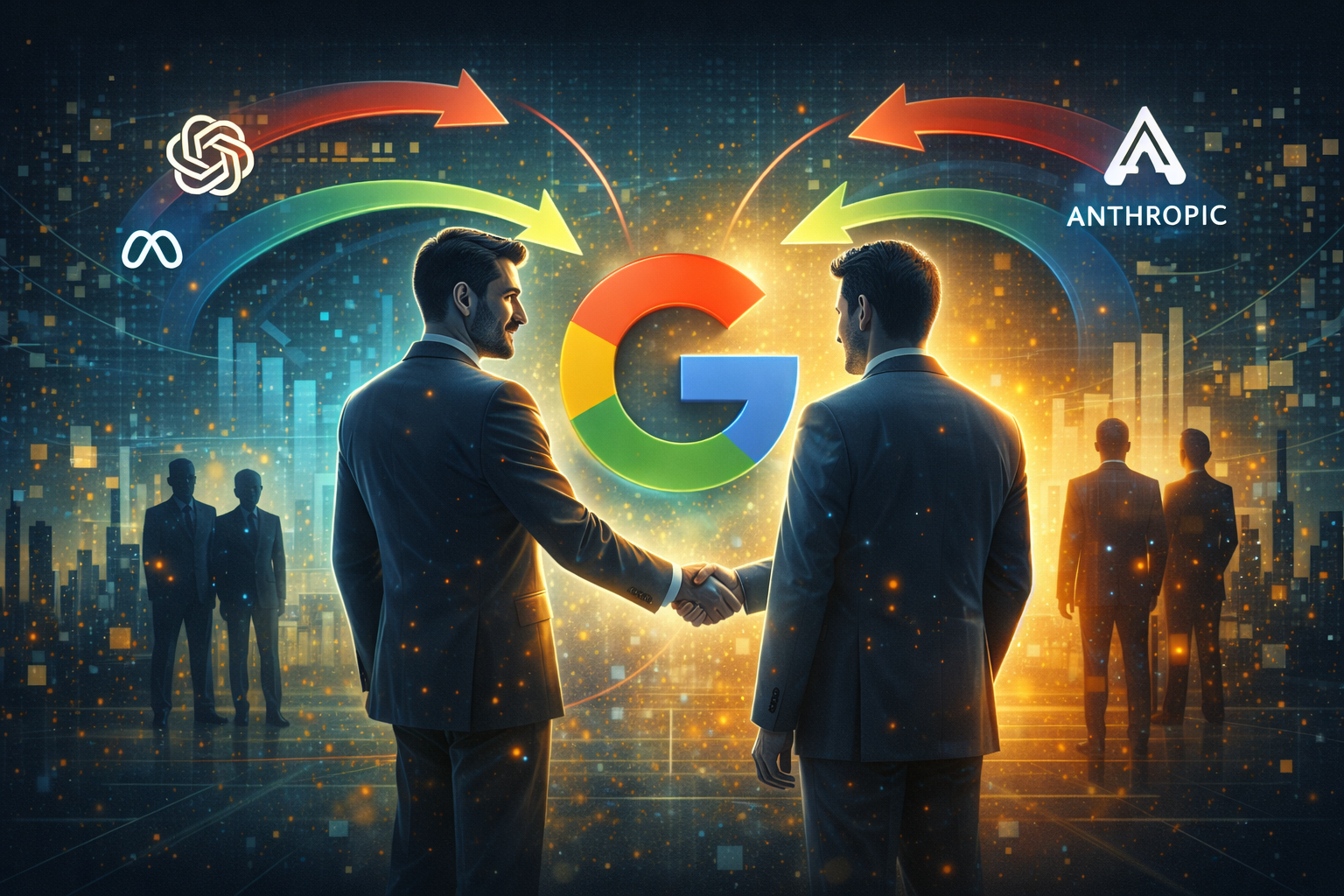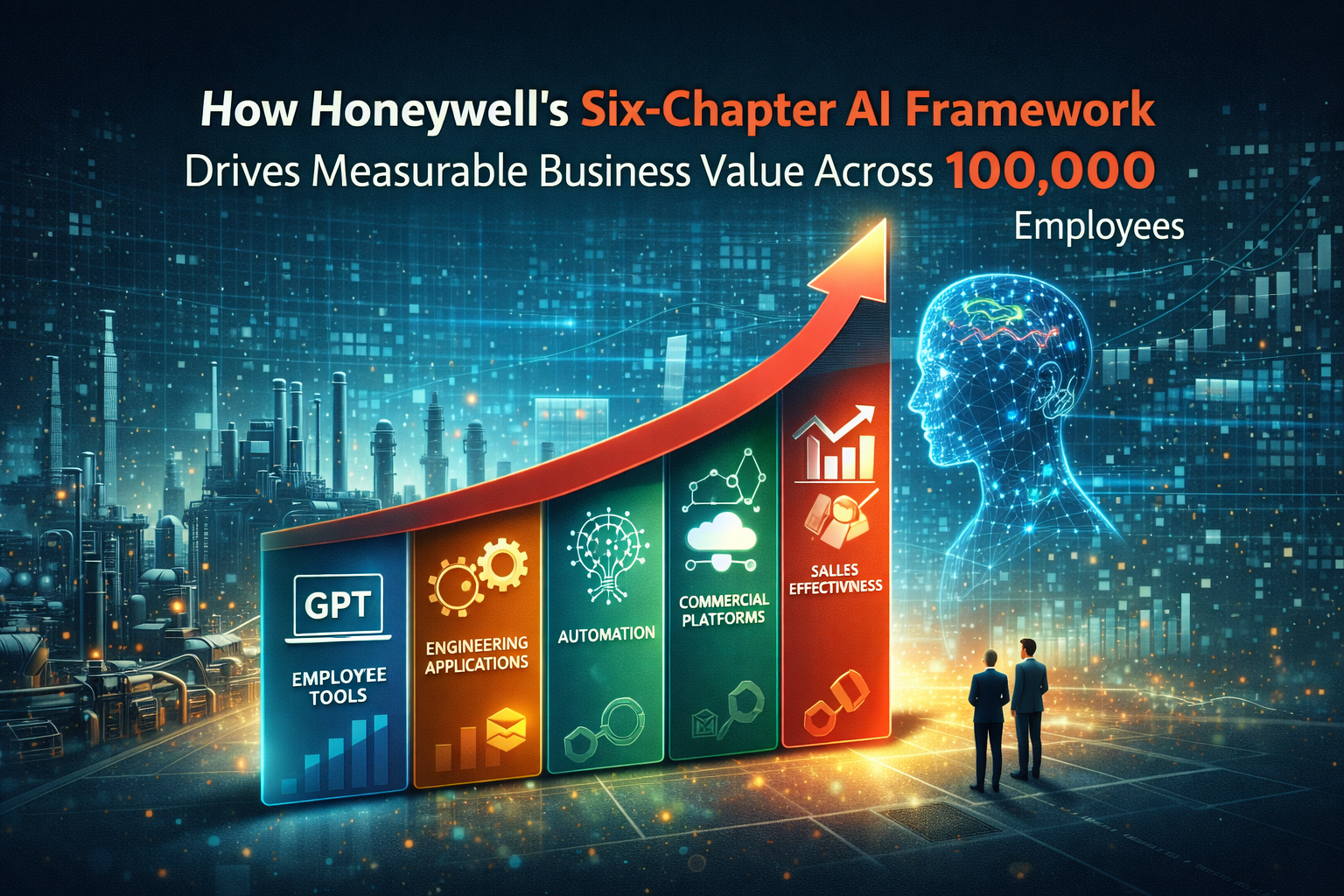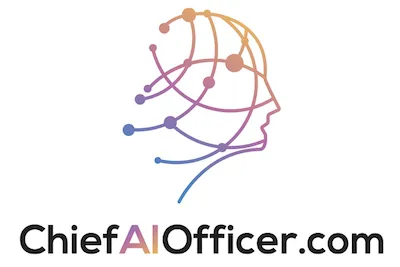How UBS Went From 1,000 Analyst Videos to 5,000 Without Adding a Single Studio
UBS publishes 50,000 research documents annually. Until recently, only 1,000 of those became videos. Not because video isn’t valuable. Because producing analyst videos the traditional way requires studio time, production crews, and workflows that become bottlenecks at scale.
Starting January 2025, UBS deployed AI-powered avatar videos of real analysts that increased their video production capacity by 5x. Same analysts. Same research quality. Zero additional studio resources. The avatars look and sound like the actual analysts because they are digital replicas trained on recordings of those specific people.
The fascinating tension: clients increasingly prefer short-form video content (the TikTok effect has reached institutional investors), but traditional video production can’t scale to meet demand. AI avatars solved the capacity problem while creating an entirely new challenge nobody anticipated: how do you maintain the personal connection that makes analyst research valuable when the analyst isn’t actually speaking?
The Research Distribution Bottleneck
Financial research operates at volumes that make video production economically challenging. A single UBS analyst might publish 100-150 research notes annually covering their sector. Each note contains insights clients pay significant fees to access: earnings analysis, industry trends, company recommendations, and market outlook.
Traditional video production for research insights requires scheduling studio time, preparing talking points, recording multiple takes, editing footage, adding graphics and compliance disclosures, and distributing the final video. Even streamlined workflows take 2-3 hours of combined analyst and production time per video.
The math creates an obvious bottleneck. An analyst publishing 120 research notes annually can’t create videos for all of them without spending 240-360 hours annually on video production. That’s 6-9 weeks of full-time work doing video creation instead of actual research. Most analysts might reasonably allocate 20-30 hours annually to video creation, supporting perhaps 10-15 videos yearly.
The result is systematic under-production of video content relative to client demand. Written research gets published constantly while video content gets reserved for only the highest-priority insights: quarterly earnings previews, major market calls, or significant company-specific events.
Clients increasingly want video format because it’s faster to consume and easier to share internally with investment committees and portfolio managers. A 3-minute video communicates core insights that might take 15 minutes to extract from a written report. But analyst capacity constraints mean most research never reaches clients in their preferred format.
UBS faced this exact dynamic: massive written research output that clients valued but couldn’t efficiently consume, with video production capacity stuck at approximately 2% of total research volume. Scaling video production using traditional methods would require either drastically expanding studio infrastructure or accepting that analysts spend less time on actual research to create more videos.
The Avatar Technology Architecture
UBS partnered with OpenAI and Synthesia to create photorealistic AI avatars of volunteer analysts. The process starts with analysts recording their voice and appearance in a specialized studio session. The system captures facial expressions, head movements, speaking patterns, vocal characteristics, and natural mannerisms that make each analyst distinctive.
These recordings train AI models to generate new videos featuring that specific analyst without requiring them to return to the studio. When new research gets published, a language model analyzes the written report and drafts a script summarizing key insights. The analyst reviews and approves the script, ensuring accuracy and appropriate tone. Then the AI avatar generates a video of the analyst presenting that script.
The technical sophistication lies in making the avatar look and sound genuinely like the analyst rather than obviously computer-generated. Early AI video avatars had the uncanny valley problem: close enough to human to be recognizable but off enough to be unsettling. Subtle timing issues in lip sync, unnatural facial expressions, or robotic vocal delivery destroyed the illusion.
Modern avatar technology from companies like Synthesia has largely solved these problems. The avatars capture individual speech patterns: how someone emphasizes certain words, natural pauses, characteristic hand gestures, and facial expressions that accompany different emotional tones. A veteran analyst who naturally raises their eyebrows when discussing surprising earnings results will have an avatar that does the same.
The workflow creates a practical balance between automation and oversight. The AI handles the time-intensive execution (scripting, video generation, rendering) while the analyst retains control over content accuracy and message framing. An analyst can review and approve a script in 5-10 minutes versus spending 2-3 hours recording and producing a traditional video.
The 5x Capacity Expansion
UBS targeted approximately 5,000 analyst videos annually using AI avatars, up from roughly 1,000 produced through traditional methods. This 5x increase sounds impressive but actually represents conservative deployment relative to their total research output of 50,000 documents annually.
The 5,000 target means approximately 10% of research gets video versions, still leaving 90% as text-only. This suggests UBS is prioritizing video production for research most likely to benefit from the format: complex analyses that benefit from verbal explanation, time-sensitive market commentary, or sectors where clients particularly value video content.
The practical impact shows up in how analysts allocate their time. Previously, an analyst might produce 10-15 videos annually, requiring 20-30 hours of production time. With AI avatars, that same analyst might produce 50-75 videos annually with similar or less time investment because script review takes far less time than studio recording.
This doesn’t mean video replaces written research. Most UBS research will remain text-based because some analyses work better in written format with detailed tables, charts, and technical explanations. Avatars expand video availability for research where video adds value without requiring analysts to abandon written formats where they’re more appropriate.
I’ve observed similar dynamics in corporate communications where executives using AI-generated video can scale their reach dramatically. A CEO who previously recorded quarterly video messages for employees can now provide weekly updates without spending hours in production. The technology doesn’t replace high-stakes communications requiring personal delivery but handles routine updates efficiently.
The Client Engagement Surge
UBS reported dramatically increased client engagement with video content following avatar deployment. This metric deserves examination because it reveals something interesting about how institutional investors consume research.
Traditional written research requires clients to actively seek it out, download PDFs, and read through detailed analysis to extract key insights. This friction means even valuable research often goes unconsumed because busy portfolio managers lack time to read everything their research subscriptions provide.
Video content has dramatically lower consumption friction. A client can watch a 3-minute video during breaks between meetings, while commuting, or while doing other tasks. The format aligns with how people increasingly consume all information: short-form video optimized for mobile viewing.
The engagement increase likely comes from two sources: existing clients consuming more research because video format makes it easier, and new consumption patterns where clients watch videos they would never have read as written reports. An investor might not read a 15-page sector update but will watch a 4-minute video summary highlighting key points.
The TikTok comparison matters more than it might seem. Institutional investors are humans who’ve adapted to short-form video as their primary content consumption method outside work. UBS’s avatar strategy acknowledges this behavioral shift rather than insisting clients adapt to traditional research delivery methods.
Higher engagement creates a positive feedback loop. Analysts see their research reaching more clients, justifying investment in video content. Clients discover value in video research, increasing demand for more coverage. UBS builds competitive advantage through research accessibility even if their underlying analysis quality matches competitors.
The Optional Participation Model
UBS made avatar participation voluntary for analysts, a strategic decision that reveals sophisticated thinking about change management and employee concerns about AI.
Mandatory participation would create resistance from analysts concerned about AI replicating their likeness, worried about loss of control over their professional image, or uncomfortable with technology they don’t fully understand. Voluntary participation allows early adopters to demonstrate value while skeptics observe results before committing.
The voluntary approach also provides natural quality control. Analysts who volunteer tend to be more comfortable on camera, have stronger presentation skills, and produce better source material for training avatar models. Starting with this self-selected group builds the best possible showcase for the technology rather than forcing participation from analysts who might create poor experiences.
As early adopters demonstrate success (higher client engagement, time savings, positive feedback), peer pressure naturally encourages broader adoption. Analysts watching colleagues reach more clients through avatar videos face implicit pressure to participate or risk losing share of client attention.
The participation model also addresses legal and ethical concerns about AI replication of human likeness. Voluntary participation with informed consent sidesteps potential issues around unauthorized use of employee images. Analysts understand exactly how their likeness will be used and can opt out if uncomfortable.
The Accent and Personalization Challenge
UBS’s global analyst team includes people with diverse accents, speaking patterns, and presentation styles. Training AI avatars that accurately replicate this diversity represented a significant technical challenge that the company had to solve during deployment.
Early text-to-speech systems struggled with non-American accents, producing output that sounded obviously artificial or mispronounced words common in other English dialects. Modern avatar technology handles this better by training on recordings of the specific individual rather than using generic voice models, but challenges remain.
An analyst with a strong regional accent needs an avatar that preserves that accent authentically. Clients who know that analyst expect to hear their characteristic speech patterns. An avatar that neutralizes or distorts the accent breaks the authenticity that makes the video feel like genuine communication from that analyst.
Individual speaking quirks matter too. Some analysts pause frequently for emphasis. Others speak rapidly with minimal pauses. Some use their hands expressively while others remain relatively still. These characteristics contribute to each analyst’s professional identity and affect how clients perceive their research.
UBS’s solution required extensive initial recordings capturing diverse speaking scenarios: formal presentations, casual explanations, responses to challenging questions, and expressions of different emotional tones (confidence, caution, excitement, concern). This training data allows avatar systems to generate videos that feel authentic across different content types and messaging needs.
The Transparency and Disclosure Framework
Every UBS avatar video includes clear disclaimers about its AI-generated nature. This transparency decision addresses both regulatory requirements and client expectations about authentic communication.
Financial services regulations require clear disclosure of material facts that might affect how clients interpret information. AI-generated videos potentially fall into this category because clients might make different judgments about research delivered by a live analyst versus an AI avatar, even if the content is identical.
Beyond regulatory compliance, transparency builds trust. Clients who discover videos they thought featured live analysts are actually AI-generated might feel deceived, damaging the trust essential to research relationships. Upfront disclosure eliminates this risk while allowing clients to make informed decisions about how they weight different research delivery methods.
The disclosure also manages expectations appropriately. Clients understand that avatar videos represent pre-scripted, edited content rather than live analyst commentary. This prevents misunderstandings about the ability to ask follow-up questions or expect real-time reactions to breaking news.
Interestingly, transparency about AI generation doesn’t appear to reduce client engagement based on UBS’s reported results. Clients value the content and format convenience more than they’re concerned about delivery method, as long as the underlying research quality and analyst oversight remains high.
The Quality Control Mechanism
UBS requires analyst approval for every avatar-generated video before distribution. This human-in-the-loop approach prevents potential problems while maintaining research quality standards.
The language model that drafts scripts from written research can make mistakes: misinterpreting subtle points, oversimplifying complex arguments, or emphasizing wrong aspects of the analysis. Analyst review catches these errors before they reach clients, ensuring video content accurately represents the analyst’s intended message.
Script approval also allows analysts to adjust tone and emphasis for video format. Written research often includes hedging language and qualifications appropriate for formal documents but that sound awkward when spoken. Analysts can edit scripts to sound more natural as spoken content while maintaining analytical rigor.
The approval process creates accountability. The analyst’s name and reputation attach to the video content, giving them strong incentive to ensure accuracy and quality. This differs from fully automated content generation where no individual bears responsibility for mistakes.
The workflow also allows analysts to inject personality and current context into scripts. A language model might draft a generic script from written research, but the analyst can add recent market developments, timely examples, or personal insights that make the video more relevant and engaging.
The Production Economics Transformation
Avatar technology fundamentally changes the economics of research video production by eliminating most marginal costs. Traditional video production has high per-video costs: studio time, production crew, editing work, and analyst time. Each additional video incurs similar costs as previous videos.
AI avatar production has high upfront costs (initial studio session, avatar training, system setup) but near-zero marginal costs for additional videos. Once an analyst’s avatar is trained, generating new videos costs only the time required to draft and approve scripts plus minimal computing resources for video rendering.
This cost structure shift enables entirely different strategies for video content. UBS can now produce videos for research that might generate modest incremental value because the marginal cost is so low. A sector update that attracts 100 views still makes economic sense when video production costs pennies rather than hundreds of dollars.
The economics also enable experimentation with different content types, video lengths, and distribution strategies. Traditional production economics required careful prioritization of which research to convert to video. Avatar economics allow testing various approaches to identify what clients value most.
Long term, this could shift competitive dynamics in research distribution. Banks with superior video production capabilities reach clients more effectively even if underlying research quality is comparable. Research becomes partially a content distribution challenge rather than purely an analysis challenge.
The Analyst Time Liberation
Reducing time analysts spend on video production frees capacity for higher-value activities: deeper research, client interactions, and industry relationship building. This represents the often-overlooked benefit of AI-powered automation: it’s not about reducing headcount but redeploying human expertise to areas where it creates most value.
An analyst spending 30 hours annually producing videos can redirect that time to research activities that genuinely require human expertise: meeting with company management, analyzing complex financial situations, developing differentiated investment theses, or building industry networks that provide proprietary insights.
The time savings compound across UBS’s entire analyst team. If 100 analysts each save 20-30 hours annually on video production, that’s 2,000-3,000 hours of senior research talent redirected from production logistics to actual analysis. At fully-loaded costs of $200-300 per hour for senior analysts, that represents $400,000-900,000 in annual value.
More importantly, analyst satisfaction likely improves when they spend more time on work they find intellectually engaging (research and analysis) and less time on production logistics they view as necessary but unfulfilling overhead. This could affect retention, recruitment, and overall research quality.
The Competitive Pressure Building
UBS’s public deployment of analyst avatars creates pressure across the wealth management and research industries. Competitors now know avatar technology works, generates measurable client engagement benefits, and doesn’t require abandoning quality standards or analyst oversight.
Banks slower to deploy similar capabilities face disadvantages in research distribution and client engagement. Their analysts produce the same written research but reach fewer clients because they lack video scalability. Over time, this could affect research revenue as clients gravitate toward providers who deliver insights in preferred formats.
The challenge for followers is that UBS has already worked through implementation challenges: technology selection, workflow design, analyst adoption, quality control processes, and regulatory approvals. They’ve absorbed the learning curve costs and built organizational expertise that took time to develop.
Competitors starting avatar deployments in 2025-2026 can learn from UBS’s approach but still face 6-12 month implementation timelines. During that period, UBS continues refining their systems, training more analyst avatars, and building client familiarity with video research that creates switching costs even if competitors eventually offer similar capabilities.
The Regulatory Navigation
Deploying AI-generated content in heavily regulated financial services required UBS to navigate complex compliance considerations that might not be obvious to outside observers.
Financial research faces strict regulations about accuracy, disclosure, and potential conflicts of interest. Regulators want to ensure that research presented to clients meets standards for reliability and that clients understand any factors that might affect research objectivity.
AI-generated video content creates potential regulatory concerns: Does AI-drafted content meet the same accuracy standards as human-written research? How do you ensure compliance disclosures appear appropriately in video format? What happens if avatar technology fails in ways that distort analyst messages?
UBS addressed these concerns through their human-in-the-loop approach where analysts review and approve all content, ensuring research quality and compliance regardless of delivery technology. The avatar is simply a distribution mechanism, not an autonomous research generator.
Regulators also care about client protection from misleading or deceptive practices. AI avatars could potentially be viewed as deceptive if clients don’t realize videos are AI-generated rather than live analyst presentations. UBS’s transparency and disclosure approach manages this risk.
The regulatory navigation likely required months of discussions with compliance teams and potentially regulators before deployment. This represents another advantage UBS has over followers: they’ve already established the compliance frameworks that others will need to develop from scratch.
The Technology Evolution Path
Current avatar technology represents early deployment of capabilities that will improve rapidly. UBS is building on a technology platform that becomes more sophisticated over time, creating compounding advantages.
Near-term improvements might include: more natural conversational delivery, ability to generate avatars from less initial training data, support for interactive video where avatars respond to viewer questions, and better handling of complex visual content like charts and graphs.
Longer term, avatar technology could enable entirely new research formats: personalized videos tailored to individual client interests, interactive presentations where clients ask follow-up questions and receive avatar-generated responses, or multi-analyst roundtable discussions featuring avatars that never met in the same physical room.
UBS’s early deployment positions them to incorporate these improvements as they become available. They’ve built the organizational infrastructure, workflows, and analyst adoption necessary to leverage advancing capabilities. Followers will be playing catch-up not just with current technology but with whatever improvements UBS implements over the next 2-3 years.
The Human Connection Paradox
The most interesting challenge UBS faces isn’t technical but psychological: maintaining the human connection that makes analyst research valuable when clients increasingly consume that research through AI avatars rather than direct human interaction.
Clients pay premium fees for research because they value specific analysts’ expertise, judgment, and market insights. Personal relationships between analysts and clients matter enormously: clients trust certain analysts because they’ve built relationships over years of interactions.
AI avatars threaten to commoditize these relationships. If clients consume research primarily through avatar videos rather than personal interactions, does the individual analyst matter as much? Could clients become indifferent about which specific analyst covers their sectors if they rarely interact directly?
UBS likely views avatars as complementary to rather than replacing direct client interaction. Avatars scale routine research distribution while freeing analysts to focus on high-value personal interactions: customized analysis for key clients, attendance at client events, and relationship-building that creates loyalty beyond just research content.
The successful model probably involves avatars handling breadth of coverage (ensuring all research reaches clients efficiently) while human analysts focus on depth of key relationships (personal service for most important clients). This division allows both scale and personalization.
What This Means for Professional Content
UBS’s avatar deployment provides a template extending far beyond financial research. Any industry where experts create substantial written content but lack capacity to produce video versions faces similar dynamics: legal analysis, medical research, technical consulting, academic publications, and professional education.
The pattern is consistent: expertise exists, written content gets produced at scale, demand for video format exceeds supply, traditional video production creates bottlenecks. AI avatars solve the capacity constraint while maintaining expert oversight.
Law firms could deploy partner avatars presenting case analysis. Medical researchers could create video explanations of published papers. Consultants could scale thought leadership through avatar-delivered insights. Professors could provide video lectures for published research.
The common requirement is that content quality depends on expert knowledge while delivery format is secondary. Avatars work when the constraint is production capacity rather than expertise. They fail when authentic personal presence matters more than content (therapy, coaching, inspiration).
Your Strategic Response Path
For financial services firms, consulting companies, and other professional services organizations, UBS’s success creates a decision point: invest in avatar technology now or accept growing disadvantages in content distribution and client engagement.
Start by assessing your content production economics. How much expert-created content exists in written form that clients would consume as video if available? That gap represents your addressable opportunity if you can reduce video production costs through avatars.
Evaluate technology vendors carefully. Avatar quality varies dramatically across providers. The difference between mediocre and excellent avatars determines whether clients engage enthusiastically or find content off-putting. Invest in testing with small groups before wide deployment.
Design workflows that maintain quality while capturing efficiency. The human-in-the-loop approach where experts review AI-generated content preserves quality standards while reducing production time. Don’t automate expert oversight just because technology allows it.
Prepare your experts for avatar adoption through voluntary pilot programs. Early adopters who succeed create positive examples that encourage broader participation. Forced adoption creates resistance that undermines implementation.
The Future of Expert Content
Professional content distribution is shifting from text-centric to video-centric formats. The organizations that enable their experts to scale video content efficiently will reach audiences more effectively than those constrained by traditional production economics.
UBS proved that AI avatars can maintain quality and authenticity while delivering 5x production capacity increases. The question isn’t whether avatar technology works. It’s whether your organization will adopt it before competitors build insurmountable advantages.
Going from 1,000 videos to 5,000 isn’t about technology impressive features. It’s about solving the fundamental constraint preventing experts from reaching audiences in their preferred format.
That’s what transforms industries.




